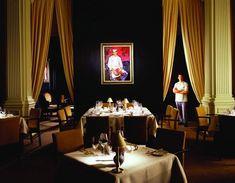
A Bartlett and Sons (Airdrie) is causing a stir with its not so humble Rooster potato. The firm recently scooped two awards at the Scottish Food & Drink Excellence Awards, where Rooster came out top in both the ‘Retail Fruit or Vegetable’ and ‘Healthy Eating Marketing Promotion’ categories. And Rooster potatoes were also feasted on by the likes of Tony Blair and George Bush at the G8 summit talks, held at Gleneagles Hotel on July 6-8.
The firm is increasing its potato acreage this year, following success with a number of varieties, and the area dedicated to Rooster has increased year on year since Bartlett’s introduced it as a branded line. “This year we will again significantly increase our acreage of the variety,” says Bartlett’s retail analyst John Hicks.
The Rooster variety was commercially released in 1991 in Ireland and has since become Ireland’s best selling potato variety.
Bartlett’s first packed Rooster in 1995 as a general-purpose red potato rather than as a ‘brand’ in its own right. “Bartlett’s believed Rooster could be a greater hit with consumers if it was marketed in the correct way and therefore in 2003 we launched it as a ‘branded’ product,” Hicks explains.
In 2003 Bartlett’s entered into an agreement with Irish Potato Marketing Ltd (IPM) for sole rights to grow and market the variety in mainland Britain. Consequently, Bartlett’s now controls the certified seed, growing, packing, distribution and marketing of the variety in mainland Britain.
The Rooster potato is a main crop, red-skinned, yellow-flesh variety, which Bartlett’s claims is excellent for roasting, baking, mashing, and chipping.
The variety has the dry taste and texture characteristics of traditional potato varieties such as Kerrs Pink, but has the yield of modern commercial varieties.
Last year, Bartlett’s updated its Rooster potato packaging. The firm worked closely with Michelin-star chef Andrew Fairlie, who runs the restaurant Andrew Fairlie @ Gleneagles, situated within the landmark hotel, to put some of his recipes on Rooster packs.
“Rooster needs to compete with supermarket own-label fresh potatoes, prepared potato products and ready meals,” Hicks says. “This created a need for us to design packaging that makes the product standout on-shelf and bring the variety and brand to the consumer’s attention.”
“The use of Andrew Fairlie’s recipes on the pack provides both added value to the product and helps in the creation of a meal solution by providing the creativity and knowledge required to produce a meal,” Hicks says.
Rooster potatoes retail in 2kg bags rather than the normal 2.5kg due to changing consumer demographics and smaller households, says Bartlett’s, adding that this also allows for a lower price point and helps increase the frequency of purchase.
As well as Rooster potatoes, Bartlett’s grows a number of other varieties including Osprey - another Bartlett’s-managed variety. This potato was developed by Caithness Potato Breeders and according to Hicks is a good ‘general purpose’ white.
“The variety is particularly suited to Scottish growing conditions as it matures quickly and from a retail perspective it looks good on the shelf with its bright skin finish and shallow redeye,” he adds.
In addition, Bartlett’s has also increased its acreage of Ayrshire, Suffolk, and Cornish Royal potatoes. The Royal’s are Bartlett-branded products and 2005 represents the second year this product has been available in supermarkets.
“Feedback last year was very good across the areas, but particularly in Ayrshire where the feedback from consumers was excellent,” Hicks says.
While the potato is one of the UK’s most popular vegetables, sales have suffered because of Atkins and other low-carbohydrate diets, notes Hicks.
However, he believes that as healthy, moderate eating once again takes centre stage, consumers are being re-educated in the benefits of the potato.
“New potatoes are certainly the most convenient and healthy of all because generally they are cooked (usually boiled) and eaten in their whole state,” Hicks explains. “This allows the potato to retain all its nutritional benefits which can be lost during other cooking methods. Consumer desire for convenience and healthy products is certainly contributing to the increase in sales of smaller pack sizes containing smaller tubers.”
The hospitality industry currently accounts for less than 10 per cent of Bartlett’s business. However, Hicks says it is a growth sector and if market trends are accurate, the industry will see demand from the foodservice increase and retail consumption fall.
While Bartlett’s does produce organic potatoes, the percentage of its overall tonnage is small, at less than one per cent. “This both reflects our customer base and general consumer demand for organic products,” Hicks says, adding that Bartlett’s doesn’t use any chemicals in the storage of its crops, which are maintained through a temperature control process alone.
Bartlett’s is also the UK’s biggest root vegetable supplier, supplying more than 10 per cent of the UK’s root vegetable volumes.
The company is investing heavily in its operations and its Cambridge facilities are currently the scene of an £8m improvement programme. Some 2,500 hectares are now under cultivation.
In addition, the Airdrie site has seen major investment with £32m spent in the last three years alone. “The site is one of the most modern and environmentally friendly in Europe,” Hicks claims.






No comments yet